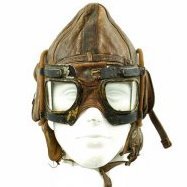Leaderboard
Popular Content
Showing content with the highest reputation on 11/02/2020 in all areas
-

QF-4S Phantom "VX-30" - Tamiya/Cutting Edge, 1/32
scvrobeson and 14 others reacted to Starfighter for a topic
Of course I forgot to take a photo of the national insignia - I will do that later today. Just a short update: I have sealed the entire model with Gunze GX-113 followed by a coat of MRP matt varnish. Pretty much exactly the finish I personally prefer; the initial coat of Gunze varnish prevents the MRP one to attack the base coat. Then, the tail fin was equipped with a fuel dump from Quickboost (not really necessary) and painted International Orange. I will add a few stiffening plates later on. I have also started playing around with the "hot" sections on the fuselage and stabilisators. Not my favourite task as I don't have tons of experience with bare metal finishes. I have ordered some AK Extreme Metal paints but was not too happy with the shades I have received, so I switched back to what I personally know best - Humbrol Metal Cote combined with metal pigments. The base shade looks rather good IMO, now I'll have to bring it alive by adding as many different shades as possible. AK Metal powder applied directly onto the (masked) fuselage. No need for a high shine basecoat or so. The distinctive pattern on the stabilisers was masked with liquid mask. I'm still playing around with them with no satisfying result... stay tuned!15 points -
Revell Bf 109G-10 Erla - *Finished*
Starfighter and 11 others reacted to b737flyer for a topic
So after sitting on the shelf of doom for the last three years, I decided to finish this one up. I changed my mind on the paint scheme I had originally planned and was finally able to get the painting process started.12 points -
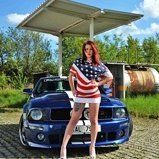
A6M5c Model 52 Hei Takeo Tanimizu 1/32 Hasegawa
Nighthawk Calling 1 and 10 others reacted to Miloslav1956 for a topic
Zero number 9. finished. Work in progress:11 points -
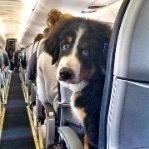
HH-60G Pavehawk Kitty Hawk 1/35 DONE!!
A-10LOADER and 9 others reacted to Pete Fleischmann for a topic
Hello all- a quick check of the sponson fit and gear alignment before these parts go off to the paint shop- cheers Pete10 points -
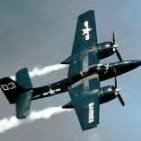
Ki-45 Toryu - Kai-Ko - 53rd Sentai, Matsudo AB, 1944 - DONE!
GROWLER 96 and 8 others reacted to Out2gtcha for a topic
Marching steadily and relentlessly toward the end! This one is just now down to a few of the final details. I forged on and got the MLG wheels glued in on my piece of tile I used to foil, so as to get them perfectly flat (or as near perfect as I can get). I prefer to use 15 min mid cure epoxy for gluing on wheels, as I like to have time to adjust their position as needed on the fly. Small pieces of blu tac on the outside of the wheels usually keeps them in line until the epoxy is cured. I'll connect up the brake lines ones everything has hardened off: I also managed to get the canopy handles glued on and painted/weathered up: For a funny size comparison..................a 1/32nd F7F Tigercat prop on a 1/32nd Ki-45 - lol - It looks like I'm holding it WAY away from the model, like the prop is in the foreground but I'm actually nearly holding it right up on the cowl : Thats it for now fellas. Ill be letting this cure for a bit as I take the wife out for her birthday. Later if she wants some "her" time, Ill probably get on with the last semi-major thing, and that is installing the belly light and subsequently paint it and the wing tip lights. Cheers!9 points -
RAF FG.1 XV571 WILD HARE Phantom Conversion
Paul in Napier and 7 others reacted to Anthony in NZ for a topic
Just letting you all know that I havent been abducted by aliens and I have actually been solidly working on this back end. Have got a bit carried away with surface detailing which you will see when I get these two pieces glued together and given a 'Chuck Wash' all will be revealed Cheers Anthony8 points -
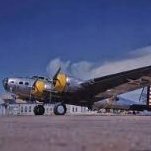
HK B-17...C 5/4 sweating the metal
Brett M and 7 others reacted to brahman104 for a topic
Well the HK box says over 800,000..... and they don't really depict the double rows, sooooo.... Hahahaha!! Bit like that isn't it Mark! Thanks so much Peter! I'd love to say I pioneered this technique, but there are many others out there that I've learned from along the way. Of course, as you know, one has to try it for themselves and make their own mistakes too! And there's plennnnnty of those! I reckon you could Ben, just depends how many years you want to extend you build by!!! Absolutely Rainer! Now how about yours....... Thanks Derek! I appreciate the comments! So, the top side of one inner wing is done! Very happy thus far, it does take an awfully long time though! The last six months or so has been focussing on the wings, mainly because I was at a stumbling block with the fuselage lighting. I really couldn't decide how I was going to run the wires, where I was going to put the power source, or exactly how I wanted the lighting to be placed. As that needed to be solved before anything else could happen, I took a break from that knowing that I generally get to point later on where I have a revelation and the path ahead becomes clear...... This is what keeps me going on a big project like this; focussing on doing a few bits and pieces here and there then moving to something else once I figure it out. It's almost the same a starting a new model, but because it's so big there's always mini-projects to do.... Back to the lighting. I actually hadn't tested the lighting since the move and didn't even know if everything still worked. The "magnet wire" I use for the LEDs is so fine a couple of repeated wiggles in the same direction can snap it, which causes major headaches if you've just permanently installed a light or tubing. Happily, the four existing LEDs seemed to work just fine. I had installed a power distribution board made by a company called ngineering. They make all sorts of cool stuff for model railways. The board I had was supposed to do up to 8 LEDs, and I'd already connected 4, but when I went back to the instruction guide I couldn't work out how to wire up the additional 4 off the same board. I was worried about the prospect of creating short which might damage what I had already done, so I used another board and ran power to each one in parallel off a mini "bus bar." The "Bus Bar" was simply the solder pads for some self adhesive LED strip lighting, so it worked well to sit in the void that is the wing root area. You can see the original board at the top in the life raft area, and the second one I am working on now which will live under the radio room floor. The red and black wires running to the left will be the main power wires which will run through the gear legs, seeing as I need an 18V power source to run the boards. The mountain of tape you see here looks absolutely awful, but I'll tidy it up once everything is working (and it'll be hidden anyway ). A while ago I'd 3D printed some little lamps for the radio operator and navigator. I'd already connected one of these up, but needed to run a piece of tube from the light to mount it above the radio operator's table like in the real thing. The problem I had was that while magnet wire runs nicely through a 0.18" inch stainless tube, this LED was pre wired with something a bit bigger. The wires were more hardy, but they wouldn't fit in the stainless tube. After some rummaging around I found a piece of brass tube that seemed to do the trick, but for some reason the two wires on the LED would just not fit, so began the painful process of trying to ream out the brass tube.... Eventually, I had to temporarily solder the tube to a piece of brass flat because I couldn't stop it from spinning in my fingers when using a drill bit. The other bit of fun happened (and I knew it would) when the tip of my 0.6mm drill snapped off inside . Nothing for it, I managed to very carefully tap another drill in and dislodge it. After two hours worth of work, by the time I'd reconnected the light, everything was back in place.... I sure hope my radio operator appreciates the effort!!!! You can see on the right of the photo the other two wire running down bulkhead #6. These run through the wall and into some tube to make the dome light over the main cabin entry door. There's another to go down near bulkhead #8, one to the cockpit and one for the navigator. It'll be a big relief once they're all in a working!! It's good to be back working on the fuselage again.......See you next time Craig8 points -
Eduard P40-N
Rockie Yarwood and 6 others reacted to Robthepom for a topic
Very enjoyable build the Eduard upgrades on the Hasagawa kit are excellent Thanks for following7 points -
Moving the XB-70 Valkyrie
Rockie Yarwood and 5 others reacted to Dave Williams for a topic
Temporarily moved outside for maintenance on the display at the USAF museum. Still so majestic! https://theaviationist.com/2020/11/01/museum-makes-monumental-move-of-massive-xb-70-mach-3-mega-bomber-for-maintenance/6 points -
Trumpeter 1/32 Czech MiG-21UM Stress Team
Dany Boy and 5 others reacted to spyrosjzmichos for a topic
Hi all! I'm certainly taking my time with this project but at least progressing slowly. With the airframe rescribing completed I moved on to the cockpit. Trumpeter's effort is quite commendable as the kit parts look fairly accurate when compared to my reference pics. There a few details missing such as small switches but otherwise I was quite happy with the cockpit. I only added some details on the control sticks as well as throttles in the cockpit tub. I also cleaned up several injection pin marks. For some reason, Trumpeter provides the instrument panels in clear plastic. I really don't see the point of this as separate instrument glass bezels are included, too. If there's one thing I was disappointed with are the CAM resin seats. They are too wide for the cockpit tub. I find it very annoying when aftermarket companies don't test fit their products. I decided to order a set from HAD which will hopefully fit better.6 points -

1:32 scale - Nieuport N.28C1
GROWLER 96 and 4 others reacted to sandbagger for a topic
Hi all, As I'm waiting for the display case for the Bristol M.1C model, I thought I'd star the next model. This model will represent the Nieuport N.28C1, Serial No.6177, of the 95th Aero Squadron, 1st Pursuit Group, operating from Saints aerodrome, France, during 1918. This particular aircraft was flown by 1st Lt. Quentin Roosevelt, the son of the ex-President. As very little of the cockpit will be seen, I'll just add control lines and bracing rigging, so essentially 'out-of-box - I think Mike5 points -

Tamiya F-16 conversion to F-2 available?
stusbke and 4 others reacted to Pete Fleischmann for a topic
I’ve had a conversion on the bench for a few years-converting the Tamiya kit as a one- off project. It’s do-able. I really need to get back to that someday.... cheers Pete5 points -

HH-60G Pavehawk Kitty Hawk 1/35 DONE!!
Greg W and 4 others reacted to Pete Fleischmann for a topic
Sponsons and gear are mounted-5 points -
Thanks guys! I do appreciate the comments! Hasegawa provides decals for the landing gear loading indicators. They don't correspond to the colors found in my references at all. Since the decal sheet had been previously scanned to produce masks for the markings, it was relatively easy to make new masks for these indicators. Here is what the landing gear covers look like when placed on the legs. Inching closer to painting, the Eduard canopy masks have been applied. I really LOVE the Eduard masks. With very few exceptions, they seem to fit so perfectly. In my haste to paint the horizontal stabilizers, I forgot about the flaps. I am going to show the combat flaps in the extended position. These were deployed only in flight but I'm assuming that they could be lowered manually for maintenance if necessary. Maybe not typical or operationally realistic, they give the model a bit more visual interest. Here are the flaps after painting. I lifted a big chunk of green with tape and that area needs to be repaired. I'm going to apply Micro Mask with a sponge to see if I can salvage some chipping. Both the stabilizers and flaps will be sealed with gloss and further weathered separately from the rest of the aircraft.5 points
-
Thanks Troy, appreciate it! So, time to address the last major cockpit sub-assembly - the IP. This was a similar arrangement to Tamiya's Cosair kit, with printed instrument face decals applied to the back of clear parts which are then glued to the rear of the IP. I gave the clear parts a dip in Pledge to give the faces a glass-like sheen and also protect from any fogging from the Tamiya Extra Thin I used to glue them in place. The decals are printed quite nicely, but I had a few issues with them dislodging even after application of MicroSol and drying overnight. For those building this kit, I would recommend cutting off any excess carrier film before application to the clear parts as this interfered with positioning of the clear parts into the various locators and could cause the decals to dislodge. Thankfully I managed to avoid any of the decals folding up on themselves or tearing - phew! Now on to the hole left by the removed de-icing pump handle discussed above. This is made tricky as the upper part of the frame is comprised of 2 separate parts which are not joined until later after the fuselage halves are joined, which then makes the area inaccessible. Eduard provides a PE part for the fitting hole so I decided to attach this now to the upper part after cutting away the existing plastic. I'm now relying on Tamiya's excellent engineering to bring this together seamlessly later! Ryan mentioned that the clock was often removed from the IP as it was cool for pilots to wear it around their neck. I had already painted and weathered the IP, so decided to leave the clock in place which I guess makes my pilot one of the nerds who liked everything in its place! So with that done (and not before time!) it's time to start pulling the interior together. With so much PE and various modifications, it's important to test fit all the sub-assemblies so we don't run into any nasty surprises later. Here's a look at the cockpit tub. Since the last update, plumbing has been added to the hydraulic hand pump on the cockpit floor, the oxygen cylinders behind the bulkhead added and plumbed, and the seat bearers added. Here's the starboard side with the cockpit dry-fitted. So far so good... And the port side. A few things still need to be done, but we're getting there - I'm happy with the way it's looking, suitably busy! The test-fitting has revealed a few issues that will need resolving and perhaps a change in build sequence, but more on that later. Cheers guys!5 points
-
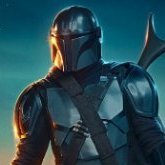
Polikarpov I-16 - Spanish Airforce - DONE!
Chris Wimmer and 4 others reacted to Fanes for a topic
Thanks for your input Alex! I ended up using some flat coat from AK (should be from Vallejo) which lays down flat but not as thin and smooth as a lacquer flat. cockpit finished up I finished the pit in multiple small sessions and decided to take pictures afterwards. So here it is: The floor with some wheatering and the seatbelts in place. Decided to go with Sutton belts since they were used later in the war and the original I-16 belts were only available as Eduard's steel (they are just awful). The backrest all suited up From now on it's all assembling. Cheers Joachim5 points -

F4J Phantom Tamiya
Greg W and 4 others reacted to Starfighter for a topic
Great job, Rick! Fun fact: we are currently building the same BuNo during very different times of its service life!5 points -
Eduard/Hasegawa P-40N Warhawk
Rockie Yarwood and 4 others reacted to Robthepom for a topic
All done, terrible photos I know, photography does not interest me at all. Its good kit and the extra Eduard resin and PE really lifts the build experiance for me what next???5 points -
Hi guys, quick update on where I am with this. Lot's of work happening but nothing terribly flashy to show off, but here goes anyway. I used the Cold War Studio photo etch set for the gun vents, those vents alone justify purchase of the set IMO. I did cut the front vent piece down because I would be concerned with such a large piece remaining in place with superglue. Downside of that approach is that the etch part needs to be blended in with the surrounds but I think with superglue and very careful sanding I'm pretty much there. The Zacto dispensers provide far more detail and have a corrected shape vs the kit parts. They fit perfectly. Note that I built up the surrounding area since that's the way it looks on the real thing. I have spent a lot of time on the airbrake. Nick, in his seminal Trumpeter Mig-29 WIP, did a great job displaying the airbrake open and making this a feature of his Mig. I won't be taking it that far, but the trailing edge requires substantial thinning to avoid a toy-like look and as you can see the hinged arms also received a lot of attention. The parachute housing of the kit is also a poor affair that has been binned, it will be replaced with something scratch built. Cheers, Marcel5 points
-
Hasbro Razor Crest Model
Michael931080 and 3 others reacted to Dave Williams for a topic
Not really a model kit, but have you guys seen the Razor Crest being offered by Hasbro Pulse? At 30 inches long, it’s huge! I found it interesting that they are selling it via a Kickstarter-type campaign where they need a minimum number of backers to start production. What’s mind-blowing to me, is they started it off at 6000 backers to get the model into production, and they are now up to nearly 15,000. That means they’ve collected over $5.2 million dollars!!!! I get that it’s a collectible and all, but that’s some serious money. https://hasbropulse.com/products/star-wars-the-vintage-collection-razor-crest4 points -
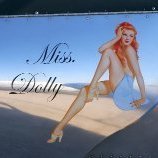
The Canadian Legacy Project
thierry laurent and 3 others reacted to LSP_Ron for a topic
I've been donating to the Canadian Legacy Project since it was founded. It is an outstanding effort aimed at helping our Canadian Veterans. This year has been particularly hard for the program with Covid and the huge economic downturn we have faced this year. With Staff support I am posting this request for donations towards their cause. Thanks, Ron https://www.canadianlegacy.org/4 points -
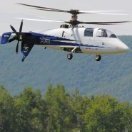
Hasbro Razor Crest Model
Michael931080 and 3 others reacted to Juggernut for a topic
Well, I just bought one for a future birthday/xmas present for my son. He's a Star Wars freak and he's into the Madalorian so he'll likely go nuts when he gets this.4 points -
1/24 th Airfix Hellcat: FINISHED !
Rockie Yarwood and 3 others reacted to Erwin for a topic
The wings are done...4 points -

Tamiya F-16 conversion to F-2 available?
D.B. Andrus and 3 others reacted to thierry laurent for a topic
Hi Damian, This may possibly help somewhat: https://designer.home.xs4all.nl/models/F2-32/f2-32.htm Not a simple job for sure but I saw the kit some years ago and this really looked like a F2.4 points -
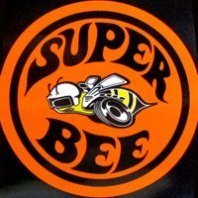
Introduction to ALEXEN Models. Weathering stencils.
D.B. Andrus and 3 others reacted to D Bellis for a topic
Since a using a tank for demonstrations isn't what LSP is all about, here are a few examples of what can be done with these stencils from T-Rexx Tools... These are the 'splash' stencils on the Alexen FG-AJ0115 set shown above. The sheet is designed to be nipped apart (stainless steel PE) into individual splashes: One sample method of using them on an LSP (Hasegawa 1/32 Fw 190A-5 that I built last year). Tape the stencil in place: Then shoot whatever muddy color you're happy with (I like RAF Dark Earth cut with flat clear and extra thinner) through the stencil and BINGO, you have this: Another example showing the addition of mud splatters to the underside of the wing where it would normally get thrown up by the wheels. Set the template in place (in this case Alexen FG-AJ0056) and spray through it where you want the splatters to be (NOT through the entire template, obviously): Pull the template off, and there you have it - perfect mud splatter (nearly impossible to do without stencils such as these): I love these things! So much so, that I've been going back over a few completed models and adding these kinds of details that weren't possible for me before. Just awesome. D4 points -
Hello my friends, a week of hard work and the decals are on now. They came form the Twobobs decal sheet for the VFA-22's Hornet during OEF. Now this sheet is OOP... it's a pity. I choose the CO's plane in low-viz TPS scheme. I have the CAM Pro's decal sheet for the VFA-22's Hornet too... but the grey used is too light. Again, i'ts a pity... A good layer of the Tamiya X-22 Clear Gloss act as base for the decals. Micro Set & Sol liquids has been used to soft and set the decals, as usual for me. Again, thin layers of Tamiya X-22 sprayed to seal the decals. A good dark wash using Flory's Model acrylic wash was brushed on. 3 layers of Gunze H-20 Clear Matt were sprayed to put everything together... now the decals seems just painted on. Here some pics. Still a lot of details to be painted... CIAO! Piero4 points
-
So, time for yet another brief update! Here's a summary shot of the work done so far: Most noticeably, I've added the vertical fin, with the correct floating arrangement above the horizontal tailplanes. I filled the gap behind the resin spine with Milliput, and then drilled both it and the fin to accept a small pin cut from thin brass rod. The tail skid has also been cleaned up and attached. One problem with the work I've done here is that the additional width of the styrene post at the rear of the fin has made it too wide for the rudder, so I'll have to offset it to disguise this fact. I also had a go at making some latches, loosely following the guidelines Mark posted earlier: It's still a work in progress, as Mark's approach to making the latches really won't work on something this tiny, and I'm still trying to figure out something that will. Les confirmed for me that RAAF Tiger Moths had covered wheel hubs, so I cut a pair from styrene sheet: I'll have to tackle the wings soon, I guess, and then I'll really be out of my comfort zone! Kev4 points
-
Hello! Well, it's time for some paint... Wing was first. Tamiya Green and AK Brown were used. ...then fuselage. Bottom color is Mr.Hobby Sky. Bomb dispensers OOB looked nowhere near real ones so I build them from scratch. Engine was glued together with cowling and Towend ring. Then two brass pipes were glued too.3 points
-
Curtiss P-40B Tomahawk
Rockie Yarwood and 2 others reacted to Dpgsbody55 for a topic
Thank you, Maru5137. It's coming along reasonably well, though I keep seeing things in these pictures that I need to improve. Like the paint run two picture down ..... I've almost finished the fuselage now, and have fixed the gap in the cockpit/fuselage joint, added a gun sight as well as that air intake duct. Starting with the gap, I cut two strips of stock plastic of different sizes and glued them into that gap, then did the same on the other side. These were then filed into the shape of the contour of the scallops behind the pilot's head. Next, I'd previously added some plastic into the gap above the head rest, then added a little filler, also filed to shape.. With a coat of paint on. The sides will be painted to match the scallops which will be camouflaged, which ever scheme I may do. Once this was done, easier with the windscreen not in place, I then started on the gun sight issue. I went digging through my scrap bits boxes and found a few candidates. Picking the closest in size and shape, I added a clear top and reflector but I was unhappy with the reflector, so I cut that off and made one out of clear acetate also from my scraps. Next I added a mount which I could cut to length as I wasn't certain how this might mount in relation to the windscreen. A length of black 0.3mm wire was added to the bottom for the electrical feed to the sight. Next, I made the windscreen, which on this kit has a piece of armour glass glued to it. Not overly happy with this sort of arrangement as it is fraught with the danger of ruining the screen, but mine turned out OK. I did get too much glue on the screen attaching it to the top fuselage cover, but more on that later. Before attaching the two clear pieces, I first painted the armour glass frame. I masked the windscreen inside and the armour glass so that I could paint over the join and I think this turned out reasonably well. However, I'd have preferred to see a better way of mounting the armour glass, one that doesn't involve gluing two pieces of clear together. Once dry, I masked the outer screen and glued it to the forward cover of the fuselage, but not before checking the fit of this cover to the fuselage. This piece is a little wide, so some judicious bending was applied to the sides to get it to meet the fuselage properly before I glued the two together. As I said earlier, I got too much glue on the joint here and a blob stained the right side of the windscreen. Really rookie mistake. I wiped it out pronto, and it's hard to see in this shot, but the slight clouding is there. This had to be polished out, but I had no polish on hand. I searched the web for some, but it's hard to come by. One site had Tamiya fine and finish which was ideal, but delivery wouldn't be until December. NBG. I finally managed to track down some Tamiya Fine polish here in Aus and ordered it immediately. This was last Wednesday, and rather amazingly, it arrived on Friday. I immediately spent some time with it on the mark, and I'm pleased to say it's come up well, as best I can see with the masking in place. Then I fitted the gun sight to this assembly, together with a cocking handle to each gun. Here it is, complete with a little polish dust , since removed. One other thing I should mention is that I've also glued two locating tabs on the front inside of the front fuselage cover to assist with positioning the top engine cowl. Next, this assembly was glued to the fuselage and taped into place. The next step was to make that intake duct. The Allison engine has a down-draught carburettor at the back of the engine, feeding the fuel air mixture into the supercharger then into the engine. The duct to get air from the intake on top of the nose to the carbie is not provided. The P-40B, and other Alison engine variants all had this ducting mounted in the centre top engine cowling, the top cowl for the engine being in three pieces. So I cut two 10mm lengths of 4mm square plastic stock tube, then cut them vertically so they formed a vee shaped plenum and glued these together. The top of the vee was filed with a round file to take a length of 3mm plastic stock tube, to meet the intake and my vee shaped plenum and the two glued together. After some filler at the back where tube meets plenum and a little shaping and painting, this is what I had. And in place, but not yet glued. The top of this is filed to shape as it will be pushed up and glued into the intake duct in the top of the center cowl, as well as to the carbie. The top right and centre cowling will be permanently attached to my model, with only the left side cowling and left top cowling removable for display. Before doing this, I checked the fit of all these parts, which revealed that the part of the cowling that will be permanently attached was not a good fit. Some more judicious bending at the back, and twisting at the front fixed that, so the carb intake duct was glued in, then glue applied to the cowl and carbie top as well as those tabs glued into the fuselage top cover, mentioned above, and here's the end result. Here it is from the other side. And with the two engine cowlings in place on the left side. And again, this time a view into the engine compartment. A couple of touch ups to be done, but I'm happy with the results. It's up to you to decide if that duct was worth it, but this more closely resembles the pictures I've seen. Same goes for any of the other mods I've added. One last thing. Can anyone tell me what colours the two filler points should be in the left scallop behind the pilot's head?? I've an idea that they should be red at the front, and yellow at the back, but not really sure. So that's it for this installment. I still have some small bits to fit to the model before paint, which I'm hoping to get done within the next week. The undercarriage is made, but needs painting, and I still have to decide what to do with the air vents behind the radiators. Kit part or etch parts?? Oh, and I'm missing a colour for the camo, so best I get that tomorrow. Cheers all, and stay well. Michael3 points -
Hi, I think the Mirage 2000 is one of the most aesthetically pleasing jets ever built and I am seriously tempted to buy one of these to add to my two 1/48 examples so I'll tag along If I may. John3 points
-
PCM MkI Hurricane
Chris Wimmer and 2 others reacted to Greif8 for a topic
And finally, some shots of the pilot.3 points -
3 points
-
PCM MkI Hurricane
Chris Wimmer and 2 others reacted to Greif8 for a topic
This is a series of mid-distance and macro photos that show certain areas of the Hurricane in more detail. A gun jam! Well there's a wart. I need to work on the insulator as it is anemic and needs to be white or ivory in color.3 points -
PCM MkI Hurricane
Chris Wimmer and 2 others reacted to Greif8 for a topic
Hi guys, following are some better photos of the Hurricane. I will probably make two or three posts and will arrange the photos from general overall shots through mid-range takes to a few macro photos. Enjoy the pictures and feel free to fire away with any critiques! First up will be a series of photos showing a 360 degree aspect of the build. Ernest3 points -
This build is a wrap. Overall it is presentable, but it is definitely not one of my better builds. It does look the part though. I took some quick photos to post the build right now, but I will setup my photography stuff tomorrow and take some better pictures. I placed the Hurricane on a spare base as the base I am making for this build is probably 4-5 days from completion, though it is very similar to this base. Being a short run kit, this build had its challenges. I managed to overcome the majority of those, but did not manage to perfectly tackle every one of them. In the end though, I am satisfied with the Hurricane and think I got the look I was after; that being an aircraft that shows the wear of continuous operations sometime in late August/early September 1940 without it being ready for the boneyard. The pilot also looks worn and tired, which I think is accurate for that time frame. As I said at the beginning of the thread, I wanted this build to be a bit of a counter point to the 109 build I posted earlier; i.e. completing the "prep for; return from sortie" story part of it being told by each build. This group build was a fun journey and the first time I have finished two builds in one. Again, I'll post some better photos in the next couple of days. Ernest3 points
-
Thanks guys - Rockie that article in Scale Aviation Modeller was particularly helpful - not only for a period IP pic but also for the old three dimensional parts drawings of things like the rudder bar - thank you I have been at the bench, but not modelling.. I have taken the drawings and photo's I have and have prepared the PE needed for the interior of the Fury - hundreds of parts in total. I also prepared the instruments which I will get made as decals in my next airscale stock order.. first the PE fret - this has an F4U panel in the corner for a fellow modeller in 1/18 who goes to the n'th degree like I try to to be accurate in every detail (you know who you are Jay...) ..here we have brackets, IP, anciliaries, seat bits, guns bits, rudder & control stick parts and a set of formers that surround the tube structure to give 'body' to the fuselage.. ..a bit closer.. ..and here is the IP taken from a drawing with the instruments I could identify for the Fury 1.. the drawing is for a Nimrod, but the only difference I could find was the removal of two switches on the left of the panel.. ..need to get these into PPD and Fantasy Printshop for production now, while I remake the seat as the one I made differs from the drawings.. ..that was a LOT of work... TTFN Peter3 points
-
Thanks guys, very kind of you. I'm feeling it with this one, as I do love to weather Japanese aircraft. I didn't go too overboard as I've seen some REALLY chipped up and dirty ships before, but I did keep this one very heavily weathered. I do like that look on IJA aircraft. It doesn't look overdone to my 1:1 eyeball, (IRL)at least not to me when it comes to in service IJA airplanes in WWII. Overall weathering done, I just am minus weathering the belly a bit more and adding some minor exhaust streaking. Overall Tamiya washes, Tamiya weathering pallets, liquid mask chipping, AK engine oil, kerosene leaks and stains, various filters ect ect. Sorry about the quality of the pics, my cell phone camera sucks Only about 8 small decals to put on overall Finally got the rudder attached too. MUCH more of a PITA than I had originally thought, mainly due to having to remake/modify the rudder actuator. It definitely did not turn out perfect, but it did turn out well enough at least to create the allusion its all one bar: Much more work to go on the underside as well as exhaust. Need to get on with painting the scissor links and gear door retraction mechanisms, as then I can install those and get on with securing the main wheels and tail wheel down and flat. Till next time, Cheers!3 points
-
3 points
-

QF-4S Phantom "VX-30" - Tamiya/Cutting Edge, 1/32
Kagemusha and 2 others reacted to Starfighter for a topic
You are right Matt, the slime lights on the wingtips are slightly different. I will fill 50% of the groove lines before painting them - thanks for the heads up! Almost no time for modelling this week, I have to prepare a new room for my little daughter as she'll get a little sibling in April 2021.. But there was time for a bit more fading with "faded white" oil paint. We're getting closer... According to Brian Plescia from Fightertown Decals who photographed Scooby in detail back in 2004, the wing top insignia was apparently really heavily faded, pretty much as on the photo I have posted earlier.3 points -
Long time listener, first time caller. I'm normally an armor guy but it seems I'm more interested in aircraft as of late so I thought I'd share my latest project. I've seen a few of the Revell Bf 109's built very well and thought I would give one a go. There's also plenty of aftermarket available which satisfies my habit as well.2 points
-

Duo Fw 190D-9 Hasegawa/Revell
CODY and one other reacted to Miloslav1956 for a topic
Hi all, here are my last finished models. 1/32 Hasgawa kits Aires cockpit HGW seat belts, Wet transfers & rivets Eagle wheels Eagle cals All colours MRP2 points -
Hi everyone, I would like to share here photos of one of my recent completed models - 1/32 Roden Fokker Dr.1 477/17, flown by MvR during March 1918. Dridecker is one of my favorite WW1 planes and I built about 5 or 6 models from this kit. A lot of modellers are very happy about new Meng's kit, which is much better, however Roden's kit is also very nice. I started to build models in 1/32 scale from the same kit approx. 15 years ago and this year I decided to launch a Youtube channel also using this kit. You can visit my channel and watch videos with the build progress and pictures you can find here - I did a lot of things with this model: - plastic sparking plugs were removed and replaced by scratch build - added wires to sparking plugs - HGW seat belts - plywood fairing imitation - control cables - made double wire bracing - I was mostly focused on painting and streaky camo. So, please enjoy this model2 points
-
Can't always trust a pilot's memory
Rockie Yarwood and one other reacted to LSP_Mike for a topic
This is exactly why I treasure my books by Jeff Ethell. Kodachrome color. Take into account the weather that day, and revel in all that glorious color.2 points -
Im still really hoping for a sea fury 1 appart from fishers resin their isint a nice one near this scale 2 since 1/24 are huge, having foldable wings really helps display 3 i love the grey and egg green paint job. 4 its british!2 points
-
Yesterday I was finally able to present the completed model to the man that flew the real one, Graham Neil. I had lunch with him and his wife Ronni at their house in Noosa, Queensland, just up the road from me. Here are some pics of the special moment.2 points
-
The grey (or gray if you prefer) is down. Flowed like a dream, and after a few coats it was opaque enough for the true color to come out, but thin enough to still see some of the black (or in this case green) basing: The top also turned out well, and hopefully will reduce the amount of paint ridge between all the colors. What at this point feels like hundreds of little Christmas presents to unwrap on the top......... The rudder is just setting on at this point to see how well things lined up On to opening some presents then! Cheers2 points
-
I am not “shrugging my shoulders”. I simply no longer have anything to do with the running of the company. I “handed my notice” in early-February, before COVID became a headline, and I ended my involvement with the company in early-March when the Irish government asked all non-essential businesses to close. I am not drawing a salary from the company and I have not seen the office since February. Aaron is completely in charge of the company. All I can do is “advise” him, but then it is entirely up to him to do the rest. Aaron has been involved in this for many years. I am not a spokesperson for him or the shop. As for the use of my name on the products that I designed, there are plenty of examples of brands that continue to carry the name of their creator long after the creator ended their involvement. RB Productions products bear my name because I created them, irrespective of who sells them and in what manner. I no longer have anything to do with the retail of these products. I moved on to the next chapter in my life. All I want to do is create new products and designs,. I am doing that now and I am able to dedicate a lot more of my time to it. Radu2 points
-
Hello, some progress with the painting phase. After a black layer acting as base some white was spattered into the center of the panels. The main camouflage was applied using Gunze H307 for the upper surfaces and Gunze H308 for the sides and lower surfaces. Adding drops of white at the above colors the mixture has been sprayed randomly all over the model. The dark anti-slip stripes over the LERXs was applied using the specific product from Ammo by MiG using a strong brush. All the details as the RWR, ECM, chaff launchers, metallic parts has been already painted too. The model is ready for the first layers of clear gloss. CIAO! Piero2 points


